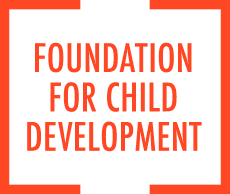https://www.fcd-us.org/mothers-education-and-childrens-outcomes-how-dual-generation-programs-offer-increased-opportunities-for-americas-children/
Mother’s Education and Children’s Outcomes: How Dual-Generation Programs Offer Increased Opportunities for America’s Children is the second in a series of the Foundation for Child Development’s Disparities Among America’s Children reports.
It offers the first-ever analysis of economic, education, and health indicators for children whose mothers have not graduated from high school, compared to children whose mothers have higher levels of education.

One in every eight children in the U.S. lives with a mother who has not graduated from high school. These children experience especially large disparities compared to children whose mothers have a bachelor degree. Key findings include the following:
Disparities separating children whose
(1) mothers had not graduated from high school, compared to those whose
(2) mothers had a bachelor degree
were, respectively:
- 53 vs. 4 percent for the official federal poverty rate
- 84 vs. 13 percent for the low-income rate (family income below twice the official federal poverty threshold)
- $25,000 vs. $106,500 for median family income
- 16 vs. 49 percent for reading proficiently (at grade level) in Eighth Grade
- 16 vs. 52 percent for proficiency in mathematics (at grade level) in Eighth Grade
The enormous disparities in well-being identified point toward the value and need for comprehensive Dual-Generation strategies that offer high-quality PreK-3rd education for children, effective job training for parents that leads directly to well-paid work, and additional public services — such as health, nutrition, food, and housing — which enable low-income families to overcome barriers to success.
Mother’s Education and Children’s Outcomes identifies federal, state, and local policy solutions to reduce these disparities.
